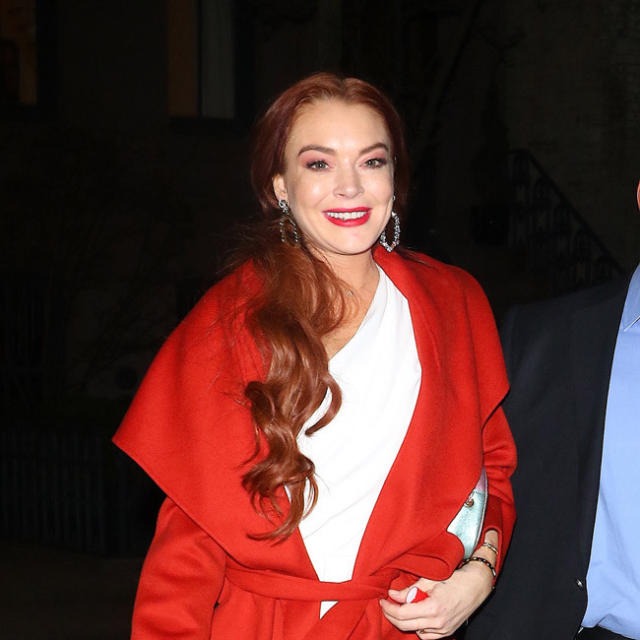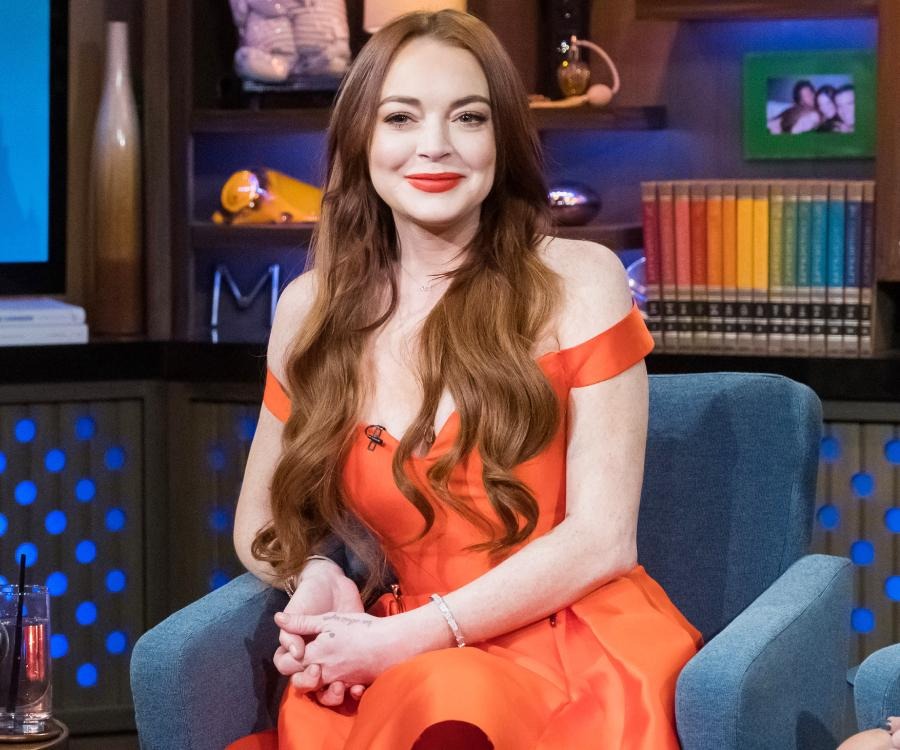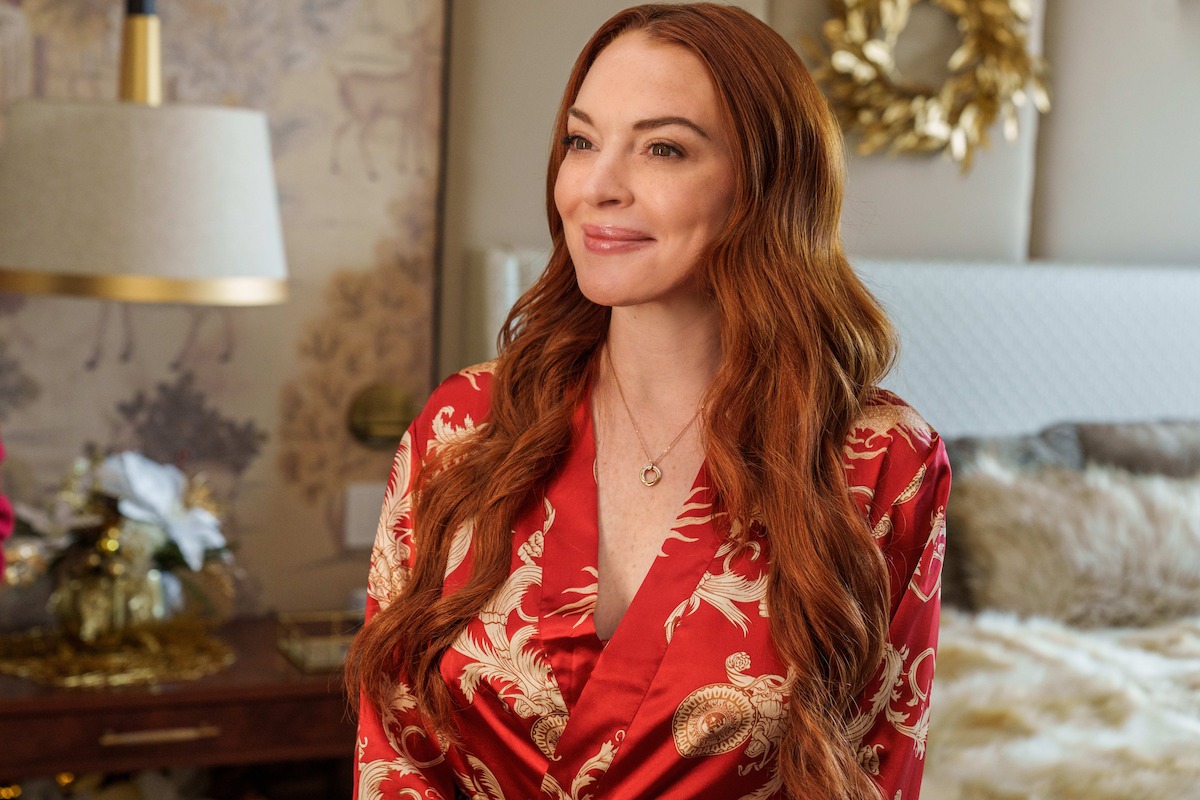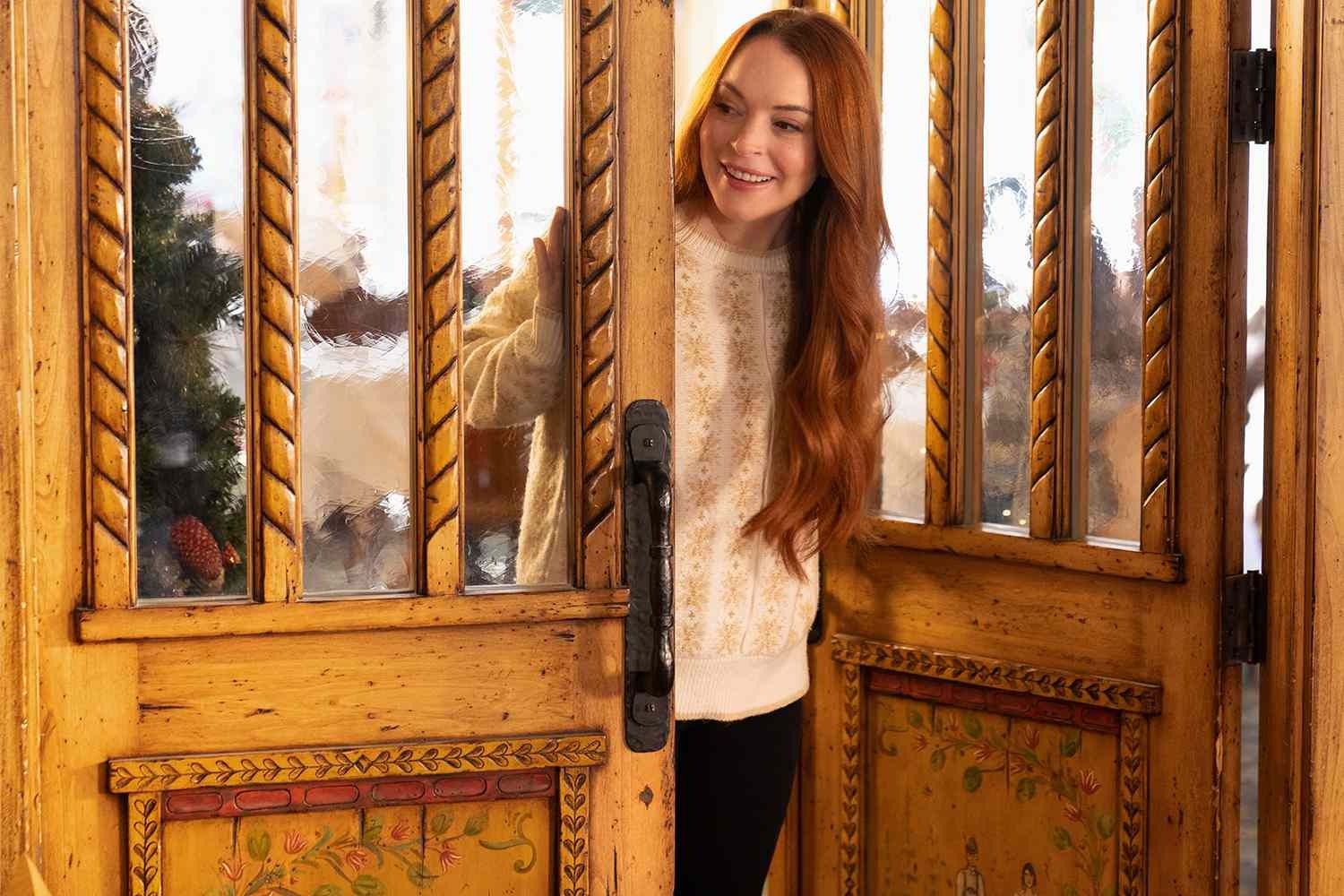With Lohan back in her rightful place as a beloved star, we look back at “Lindsay,” OWN’s fascinatingly imperfect post-rehab docuseries on a celebrity at a tumultuous crossroads.

We all know by now that “reality TV” is a misnomer. Very little of what we see in our favorite modern reality shows is truly “real,” and what is genuine has been carefully selected by editors and filtered through several producers. So, when Lindsay Lohan agreed to star in her eponymous docuseries in 2014, there was an inherent question over how much of what would air would be the then-embattled star’s real life and what would be manufactured by producers at the OWN network to drive ratings—and therefore line Oprah Winfrey’s pockets. Furthermore, the series began airing seven months after Lohan finished a court-ordered rehab stint, and began filming just four days after the rehab was completed. One had to wonder if the show’s mere existence was stomping in the muddy waters of pure exploitation.
When Lindsay premiered 10 years ago this week, on March 9, 2014, it was immediately clear that the series would be all of these things and none of them, depending on how its star was feeling at any one moment. The show was painfully real (something you could tell by how uneventful it often was), slightly synthetic, and frequently opportunistic. But given that Lohan has inarguably reclaimed her narrative—and on her own terms—over the last decade, Lindsay feels like essential viewing to examine her hard-won comeback. Lohan’s new film, Irish Wish, premieres March 15, just days after the docuseries’ anniversary, which seems like an almost cosmically timed coincidence. Looking back at it now, the docuseries is a critical chronicling of the perils of stardom, a portrait of an infectious personality with endless drive, and a darkly funny dying gasp from reality television as it once was: the wild fuckin’ west.

I should preface what’s to come with a caveat: Lindsay is not easily accessible. It’s not streaming anywhere, nor is it available to purchase or rent on media conglomerates like Prime Video or Apple TV. Whether that’s because the powers that be yanked it from public consciousness to erase this historical item from us, or is just owing to the public’s waning investment in the project, I’m not sure. The series is, however, not too difficult to find online if you’ve got a bit of internet savvy, and there is a bevy of clips on YouTube and X to convey exactly the kind of chaos that this show was dishing out in hefty, lunch lady ladlefuls.

Both Winfrey and Lohan made it known at the top of the docuseries’ premiere that they were only interested in telling the truth. “My intention is to serve as a path for you to be able [to be you],” Winfrey says. “So if I know that that’s what you really want to do, I’m going to call you on it when I feel that you’re not.” That’s a promise Winfrey would make good on in a later episode, featured in one of the clips that has survived the cultural incinerator and lived on to become a meme. Three episodes into the show’s eight parts, Winfrey visits Lohan in her childhood home on Long Island to address the show’s wonky shoot schedule, which has resulted in production delays and a lack of compelling footage. Sitting on a couch in the Lohan living room, Winfrey inquires, “Have you been sober since we last met?” Lohan tells Winfrey that she has maintained her sobriety, and begins to cry. “Hello, let’s celebrate that!” Winfrey says, and the two join hands.
It’s a sincerely tender moment, a glimpse at a self-professed addict admitting how difficult it is to maintain sobriety at all, let alone when they’re world-famous and a camera crew has been enlisted to follow them around. Early on, it’s evident that Lohan did not realize the immense pressure that would come from striving to maintain sobriety outside of a rehab setting while being filmed as she tries to jumpstart a flailing career. This is where the series starts to veer on becoming predatory. Oddly enough, it’s also the moment that its significance becomes crystal clear.

There are very few authentic, firsthand accounts of what it’s like to be a celebrity embroiled in a mess of your own making. Sure, there are autobiographies and flashy newsmagazine interviews where stars confess the details of their darkest days. But rarely has there been an eight-hour document of this struggle in real-time. Sure, you can argue that a project like this is unethical to some degree. But this is far from the nadir of Lifetime’s recent two-part documentary on Wendy Williams, which aired with little to no visible agency from its subject, who is under a conservatorship. Lohan was an active participant in Lindsay, and the show evolved around her needs as filming continued, making it a capital-C captivating depiction of a 27-year-old who was just trying to figure it out.
Lohan said it best herself during the series. “It’s really hard for people that are producing this,” she declares. “It’s easy for them to just assume that I’m doing all these things and not taking the time for [this series], but that’s not the case. I’m trying to figure out how to be sane and live, how to maintain recovery. There’s all of these factors that someone like a Craig [Piligian, who executive produced the series] doesn’t see.” The wild thing is that both parties are right. Lohan is correct, and Winfrey’s production team is correct. No one is winning in the making of Lindsay, and at a certain point, the series becomes downright farcical because of that.
During the show, Lohan remains in a smackdown battle of the wits against Matt, her new personal assistant, who is already waging a separate battle against his hairline. Matt inexplicably wears a suit every single day to assist someone who simply does not demand that level of professional demeanor. Their clashing personalities are enrapturing to watch, even if nothing is actually happening. And nothing ever really happens on Lindsay. Ten years ago, that lack of eventfulness made the show feel tedious, when viewers showed up hoping to watch a starlet climbing her way back to the top—or worse, hoping to see her fall even farther, be berated by Winfrey, or be caught with illicit substances on-camera. Now, it’s a fascinating character study of a celebrity who has always been much more naturally interesting than anyone was willing to give her credit for. Who else could make, “[Copying keys] takes 10 minutes at Duane Reade!” into a mantra I live and die by every time I pass New York’s signature pharmacy?
Watching Lindsay is an exercise in reading between the lines. Here, a viewer must examine every little detail in order to get a read on what’s going on. A sequence where Lohan gets hair extensions installed becomes a glimpse at a star trying to reclaim her signature, rosy-cheeked redhead image. Lohan later discusses her childhood with her mother, Dina, and a ghostwriter of Dina’s memoir (which would never materialize). It’s an attempt to convey her tumultuous upbringing to the audience, as is Lohan reading from her rehab diaries and having an argumentative dinner with her estranged father.
There are eight hours of footage in the series, and a lot of them are filled with this kind of darkness. But Lohan’s candor—or, at least as much probity as she was willing to offer at the time—as she navigates a rapidly shifting celebrity culture often gives Lindsay an edgy humor. I’ve said to many a friend, family member, and unwitting passerby on the street that the series frequently feels like a modern Christopher Guest mockumentary. At one point, Lohan wants to say hello to Miley Cyrus backstage at the 2013 Jingle Ball concert, but doesn’t end up meeting her before the event starts. This is communicated to us via a black screen with text appearing over it, before an inspired cut to Lohan, hunched over her phone, asserting, “Well, she should at least respond to my tweets.”
Just because the series is rather grim doesn’t mean that there is no comedy inside of its dense gloom. There is a once-in-a-lifetime sequence, the most Christopher Guest-ian of them all, where Dina Lohan is prepping that aforementioned ghostwriter, Pamela Marin, to interview her daughter. Dina and poor Pamela are a real-life Eugene Levy and Catherine O’Hara, slyly combative and downright hysterical. Dina shuts Pamela down at every turn, before the two stand side by side, and Dina discusses the potential title of this autobiography. “We were going to do A Parent Trapped, but I’m not trapped, you’ve untrapped me,” Dina says. It’s as if toxic asbestos is lining the walls of Lindsay’s new apartment, and no one has figured it out yet.
This unintentional drollery colliding with sudden turmoil is what makes Lindsay a must-watch record for anyone interested in the art of fame. Each week was akin to watching someone who had just run their car into a brick wall back the car up, put it in drive, and hit the wall again, thinking that the bricks might give this time. You want to shout at your television screen, to point out that they could simply drive around the barrier. But in this case, it would do no good. The only way out for Lohan was through.
Had Lohan’s career gone a different way, I wouldn’t be writing this piece right now. Frankly, I don’t revel in the pandemonium of someone else’s misfortune. I’m not interested in that type of schadenfreude; even when the Real Housewives dives into it, it leaves me feeling sort of sick. But Lohan has just wrapped her third Netflix film, has her second on the way in a matter of days, has garnered the public’s goodwill, and seemingly found stability and happiness in her life. I think looking back at what she fought against to get there is not only OK, but necessary. Our mistakes make us whole, and ignoring them leaves a structural deficiency by which our worst impulses can claw their way back in.
By its conclusion, it seemed as if Lohan knew that too. “I feel different, just being OK with the wreckage of my past, and letting that go and starting fresh,” she said in the series finale, part of which was filmed after the docuseries started airing. “I have that adrenaline rush that I get from doing good things and being happy, and feeding my soul again.” Lindsay ended with nothing concrete materializing for its star, but maybe that was ultimately for the best. Because the series was so inconsequential, it makes Lohan’s road to where she is now even more impressive. An Oprah-level opportunity couldn’t do that for her. Lohan had to do the work entirely on her own.